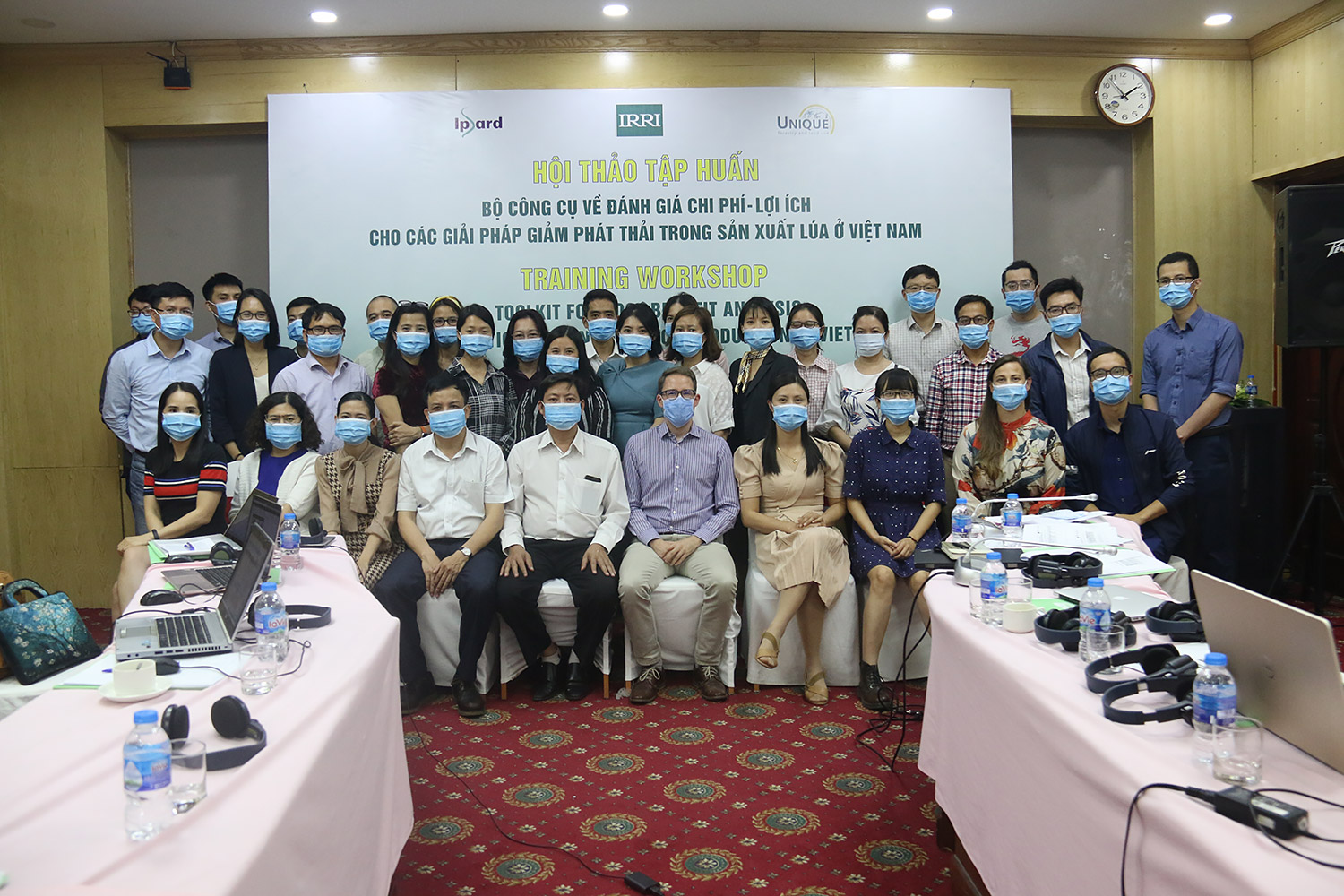
Vietnam’s NDC process to be aided with tools for assessing the costs and benefits of greenhouse gas mitigation technologies in rice production
(Photo: In-person participants and representatives of IPSARD and IRRI at the training venue.)
In supporting Vietnam to achieve its Nationally Determined Contributions (NDC) under the Paris Agreement, the International Rice Research Institute (IRRI) worked together with the Institute of Policy and Strategy for Agricultural and Rural Development (IPSARD) to develop a toolkit. This is comprised of three stand-alone tools: “MapAWD,” used for targeting and mapping suitable areas; “SECTOR,” used for calculating greenhouse gas (GHG) emissions under different project scenarios; and “Rice-CBA,” used for assessing the costs and benefits of these scenarios to guide planning of mitigation options in rice production.
Dr. Tran Cong Thang, Director General of IPSARD, highlighted the usefulness of such tools in advancing Vietnam’s national strategy of transforming the rice sector towards sustainable production and reduction of environmental impacts. In such processes, the Ministry of Agriculture and Rural Development (MARD) highlights the importance of evaluating mitigation measures both for effectiveness and efficiency. However, the procedures to establish hotspots for mitigation investment potential require specialized knowledge and are often too general to be useful in a regional context. Recognizing this gap, a customized, dynamic, and user-friendly approach was requested to be developed. The technical components of the toolkit were jointly developed by IRRI and UNIQUE in consultation with IPSARD to ensure regional and national relevance. This project is supported by the Climate Technology Centre & Network (CTCN).
On 10 November 2020, IRRI and IPSARD organized a regional training workshop titled “Toolkit for cost-benefit analysis of mitigation options in rice production in Vietnam” to introduce the three tools that support planning and decision-making of mitigation projects in rice farming. The event was conducted both in-person and online simultaneously to accommodate a large number of participants (73) and also to extend the reach to participants all over the country. Participants were from MARD, government research institutes, NGOs, private industries, and universities from different areas of Vietnam.
The three tools were introduced with step-by-step instructions for installation, data input, model running, and result interpretation. The training included a demonstration of how to link the tools together in project planning with two comparative use case scenarios. Feedback from one participant mentioned that “the presentations and instructions were clear and specific; I was able to follow despite attending online. Myself and other colleagues in the Centre for Climate Change Study in Central Vietnam expect more in-depth training workshops for these tools”. Many others appreciated the usefulness of these tools and contributed suggestions for the practical application of the tools in various production contexts.
A second hands-on training will be conducted early December wherein participants will be guided through the process of calculating GHG emissions under multiple improved crop management production scenarios and of performing cost-benefit analysis using realistic use-case examples. After both training workshops, participants will be able to use and adjust input data and models of the tools to develop project plans which optimize environmental and economic benefits.